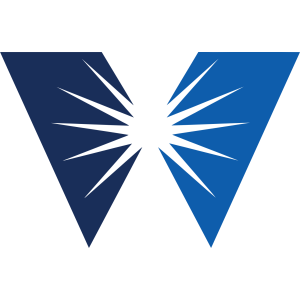Welcome to our dedicated page for Westwater Res news (Ticker: WWR), a resource for investors and traders seeking the latest updates and insights on Westwater Res stock.
Westwater Resources Inc (NYSE: WWR) operates at the forefront of energy materials exploration, specializing in battery-grade graphite, lithium, and uranium development. This news hub provides investors and industry observers with direct access to official corporate communications and material updates.
Comprehensive Resource: Track all regulatory filings, project advancements, and operational decisions through verified press releases. Our curated collection includes exploration milestones from the Coosa Graphite Project in Alabama, lithium prospect evaluations, and uranium resource assessments.
Strategic Insights: Monitor updates across three critical areas: mineral resource estimates, partnership announcements with industrial buyers, and technical developments in materials processing. Each update is categorized for efficient navigation between financial disclosures and operational progress reports.
Investor-Centric Formatting: Quickly identify time-sensitive materials through chronologically organized entries, with clear labeling of SEC filings versus corporate announcements. Bookmark this page for real-time access to Westwater Resources' evolving position in the energy materials sector.
Westwater Resources, Inc. (WWR) has announced updates on its graphite processing plant in Alabama and second quarter financial results. The company is set to receive up to $36M in incentives from Alabama and has leased 70 acres for the facility. A Definitive Feasibility Study is underway, expected by Q3 2021. In Q2 2021, Westwater reported a net loss of $3.5M, or $0.11 per share, compared to a net loss of $2.5M in Q2 2020. Product development expenses soared 1,900% due to increased pilot program costs. CEO Chris Jones highlighted achievements in battery-grade graphite production.
Westwater Resources (NYSE American: WWR) is set to hold a conference call on August 12, 2021, at 11:00 AM EDT to discuss its Q2 financial results and progress at the Coosa Graphite Project. Significant milestones will be highlighted, including a recent press conference attended by state officials announcing incentives for an advanced graphite processing plant in Alabama. The call will feature insights from top executives, including updates on financial conditions and operations.
Westwater Resources (NYSE American: WWR) appointed Chad M. Potter as its new Chief Operating Officer, effective immediately. Potter brings nearly 20 years of experience from American Consolidated Industries and Nucor Steel, where he excelled in operational leadership and safety. His expertise is expected to enhance the implementation of modern processes and revenue maximization as the company prepares to build a groundbreaking graphite processing plant in Alabama. This facility aims to create over 100 jobs, enhancing local economic development and reducing reliance on foreign graphite.
Westwater Resources (NYSE American: WWR) announced plans to construct an advanced graphite processing plant in Alabama, supported by incentive agreements signed by Governor Kay Ivey. The initial investment of over $80 million is expected to create at least 100 jobs with average wages of $21.15 per hour. The facility aims to produce 7,500 tons of battery-grade graphite annually, boosting local electric vehicle production. Additional local and state incentives totaling approximately $34.6 million will assist in job training and infrastructure. Construction is set to commence later this year.
Westwater Resources (NYSE: WWR) announced its inclusion in the Russell Microcap® Index, effective June 28, 2021. This membership enhances its visibility and liquidity, potentially attracting institutional investors. The company is focused on developing battery-grade graphite, particularly through its Coosa Graphite Project in Alabama. The recognition from FTSE Russell is seen as a significant milestone, aiming to drive shareholder value in 2021. However, forward-looking statements accompany risks related to production, capital raising, and market conditions.
Westwater Resources (NYSE American: WWR) reported its Q1 2021 financial results, announcing net cash used in operations of $4.85 million, up 40% from Q1 2020. Product development expenses surged to $1.82 million, highlighting investment in its Coosa Graphite Project. The net loss for the quarter was $5.39 million, or $0.19 per share, a 64% increase compared to the prior year. Despite these losses, the company had $117.9 million in cash and $115.1 million in working capital, signaling strong financial backing. The feasibility study for the Coosa Project is ongoing, with exploration drilling efforts initiated.
Westwater Resources, Inc. (NYSE American: WWR) has appointed Steven M. Cates as Chief Accounting Officer & Controller, effective May 10, 2021. Cates will oversee the company's accounting operations and report to CFO Jeffrey L. Vigil. Both executives emphasize Cates' financial expertise as crucial for the company's anticipated growth in the graphite sector, particularly the Coosa Graphite Project in Alabama. Westwater is focused on developing battery-grade graphite resources, navigating challenges such as raising capital and operational risks.
Westwater Resources (NYSE American: WWR) will hold a conference call on May 13, 2021, at 11:00 AM EDT to discuss the financial results for Q1 FY 2021 and business updates. Management will cover progress on the Coosa Graphite Project in Alabama and recent milestones at the pilot plant. Key executives include Christopher M. Jones (CEO) and Jeffrey L. Vigil (CFO). The call will provide insights into the company's financial status and operations. A recording will be available on the company's website following the call.
Westwater Resources (NYSE American: WWR) will present at the Planet MicroCap Showcase: VIRTUAL on April 22, 2021, at 12:00 PM EDT. CEO Chris Jones will lead the presentation and engage with investors.
The Company focuses on developing battery-grade graphite, with significant projects like the Coosa Graphite Project, which spans 41,900 acres in Alabama. To watch the presentation, register for the event here.
Westwater Resources (NYSE American: WWR) announced a Virtual Non-Deal Roadshow on April 7, 2021, at 4:00 PM EST. CEO Christopher M. Jones will present and answer investor questions. The event can be accessed via this link. The company aims to develop a sustainable battery graphite process, producing three types of materials, minimizing waste through a unique reprocessing system. Their Coosa Graphite Project is the most advanced of its kind in the contiguous U.S., covering 41,900 acres in Alabama.

